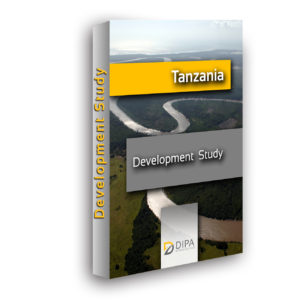1. The Country
1.1. Country’s History in Brief
1.2. Country Data
1.3. Economy
1.4. Political Context
1.5. Economic Context
1.6. Governance
1.7. Regional Integration and Trade
1.8. Social Inclusion and Equity
1.9. Environment and Climate Change
1.10. Development Challenges
2. Public Financial Management
2.1. Introduction
2.2. Situational Analysis
2.3. Perspectives of PFMRP IV
2.4. Institutional Arrangements
3. Poverty in Tanzania and National Strategy for Reduction
3.1. Poverty status in Tanzania
3.2. Introduction to the Eleventh Poverty Reduction Support Credit
3.3. Macroeconomic Policy Framework
3.4. Macroeconomic Outlook and Debt Sustainability
3.5. IMF Relations
3.6. The Government’s Program
3.7. The Proposed Operation
3.8. Link to CAS and other bank operations
3.9. Consultations and collaboration with development partners
3.10. Other design and appraisal issues
3.11. Summary of risks and mitigation
4. Tanzania’s Health Care System
4.1. Health and healthcare of Tanzanians
4.2. The United Republic of Tanzania’s Response to Health
4.3. Main diseases and epidemics in Tanzania
4.4. Institutional Arrangements of the National Health Systems
4.5. Relationship between the Public Health System and the Private Sector
4.6. Health Workforce Profile and Distribution
4.7. Vision Statement and Mission Statements
5. ICT sector
5.1. Introduction to the National ICT Policy
5.2. The Status of Telecommunication Sector Development
5.3. Policy and Regulatory Development
5.4. Telecom, Internet and Broadcasting Market Analysis
5.5. Network Subscribers
5.6. Communications Service Pricing
5.7. E- & M- Applications
5.8. ICT in Education
5.9. ICT and Environmental Sustainability
5.10. E-Health
6. Decentralization in Tanzania
6.1. Introduction
6.2. Decentralization between 1961 and 1998
6.3. The Local Government Reform Programme (LGRP)
6.4. The process of bottom-up planning
7. Research and Development Policy in Tanzania
7.1. Introduction
7.2. Rationale, Scope, Vision, Mission and General Objective
7.3. Policy Issues, Specific Objectives and Policy Statements
7.4. Institutional Framework
7.5. Implementation Plan for the R&D Policy
8. Sustainable energy markets in Tanzania
8.1. Introduction
8.2. Government Institutions, Policies and Incentives
8.3. Renewable energy production in Tanzania
8.4. Energy Efficiency Potential
9. Mining sector
9.1. Geology and production
9.2. Mineral investment policy
9.3. Outcomes
10. Investment Climate in Tanzania
10.1. Openness to, and restrictions upon, foreign investment
10.2. Conversion and Transfer Policies
10.3. Expropriation and Compensation
10.4. Dispute Settlement
10.5. Performance Requirements and Incentives
10.6. Right to Private Ownership and Establishment
10.7. Protection of Property Rights
10.8. Transparency of the Regulatory System
10.9. Efficient Capital Markets and Portfolio Investment
10.10. Competition from State-Owned Enterprises (SOEs)
10.11. Corporate Social Responsibility (CSR)
10.12. Political Violence
10.13. Corruption
10.14. Bilateral Investment Agreements
10.15. OPIC and Other Investment Insurance Programs
10.16. Labor
10.17. Foreign Trade Zones/Free Ports
10.18. Foreign Direct Investment and Foreign Portfolio Investment Statistics
10.19. Investment Opportunities in Tanzania
10.20. Investment Incentives

